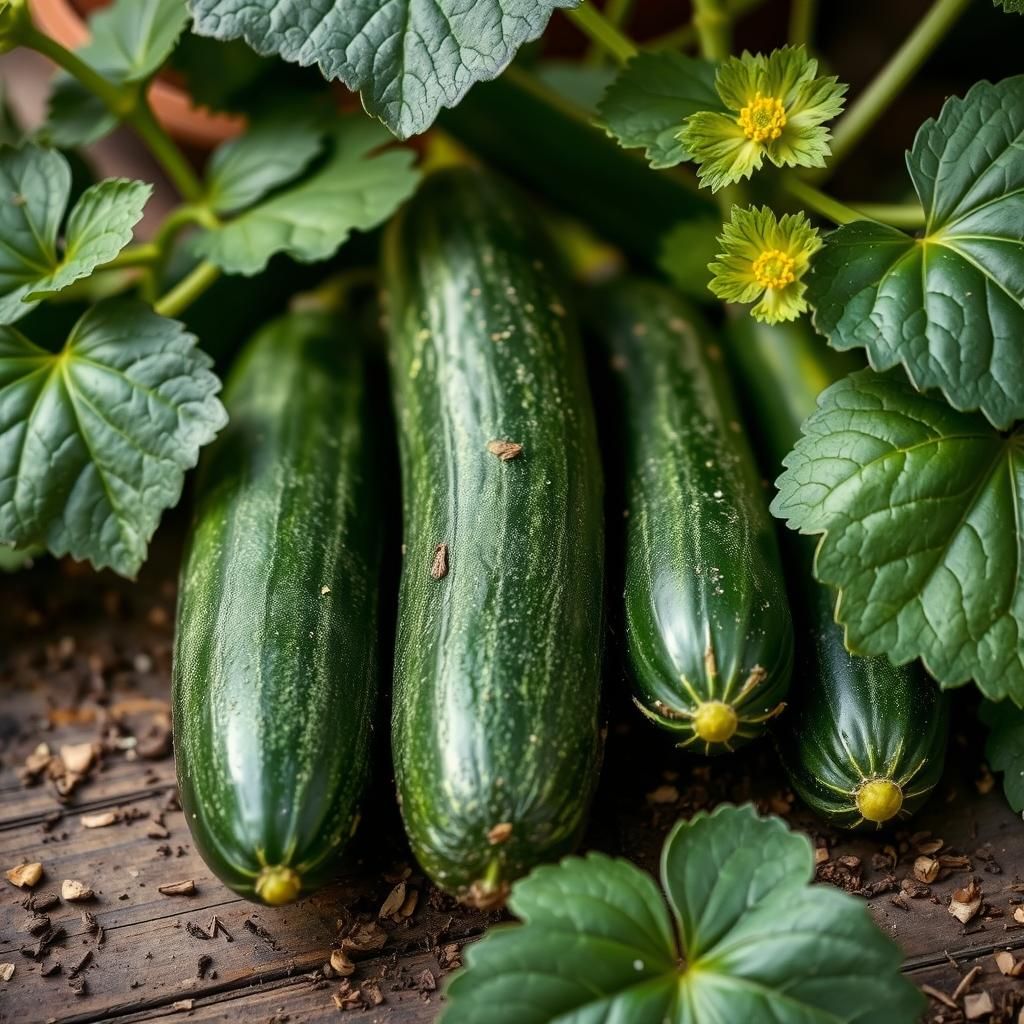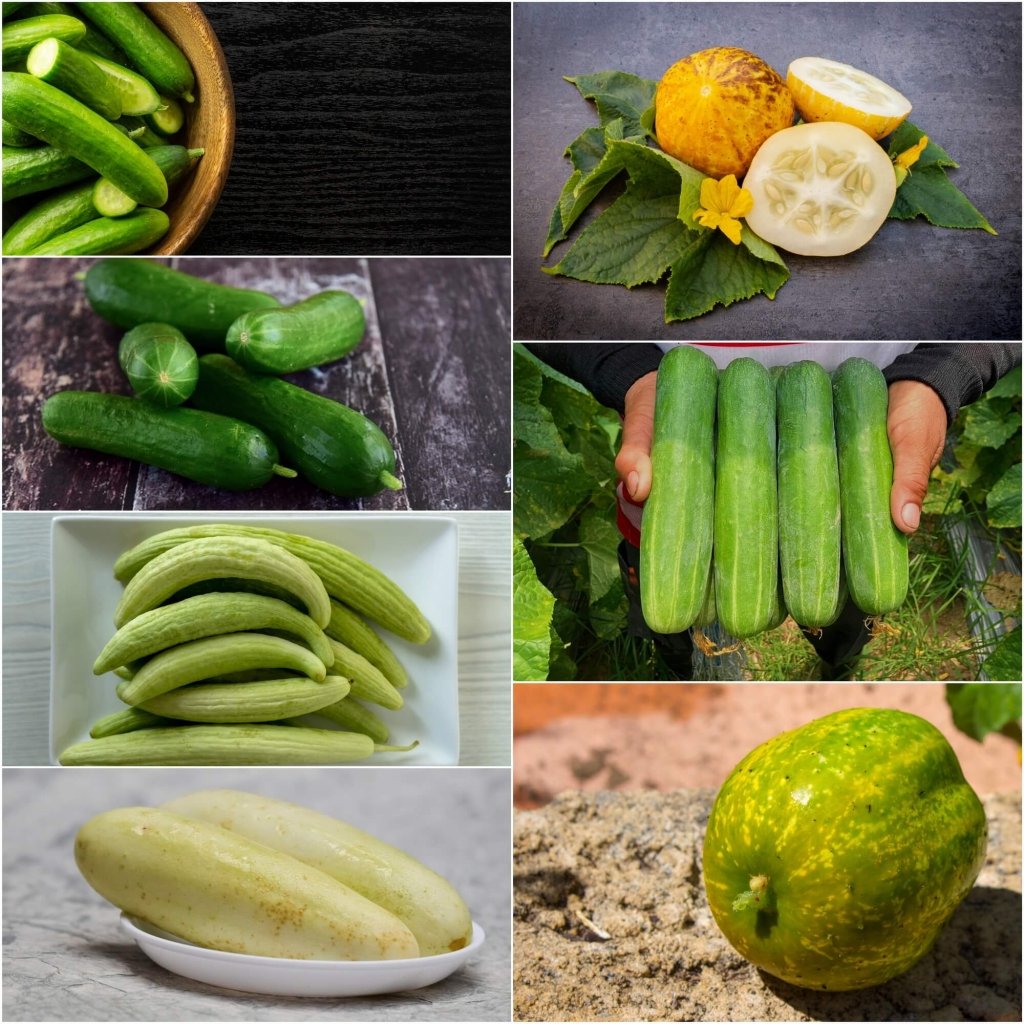Exploring the Best Cucumber Varieties in Australia for Your Garden

Cucumbers are a refreshing addition to any garden, offering both culinary versatility and enjoyable growing rewards. In Australia, the diverse climate allows for a wide range of cucumber varieties to thrive, each with distinct flavors, textures, and growth habits. Whether you are a seasoned gardener or a newcomer to gardening, selecting the right cucumber variety can make a significant difference in your gardening experience. In this article, we will explore some of the best cucumber varieties suited for Australian conditions, providing insights on their unique characteristics, growth requirements, and tips for successful cultivation. Discover the perfect cucumbers to enhance your garden!
Cucumber Varieties in Australia
Australia is home to a diverse range of cucumber varieties, each adapted to its unique climate and growing conditions. Among the most popular types are the Lebanese cucumber, known for its thin skin and sweet flavor, and the American slicing cucumber, favored for its crisp texture and versatility in salads. Additionally, the European cucumber, with its smooth skin and slightly bitter taste, has gained popularity in Australian markets. Other varieties, such as the burpless and pickle cucumbers, offer distinct flavors and uses, catering to both local tastes and culinary applications. With increasing interest in home gardening and sustainable practices, these varieties are becoming more accessible, allowing Australians to grow fresh cucumbers in their backyards.
Lebanese Cucumbers
Lebanese cucumbers are characterized by their thin skin and small seeds, making them ideal for eating raw in salads or as snacks. They typically measure around 25-30 cm in length and are known for their crisp texture and refreshing taste. This variety is popular in Middle Eastern cuisine and pairs well with yogurt-based dips or in tabbouleh. Their short growing season makes them suitable for various climates within Australia, allowing for multiple harvests in a year.
American Slicing Cucumbers
The American slicing cucumber is one of the most widely grown cucumber varieties in Australia. Known for its firmness and long length, typically around 30-45 cm, this variety is perfect for slicing, making it a staple in salads and sandwiches. Its skin can be dark green, often retaining a bit of a waxy texture. This cucumber is favored for its ability to remain crunchy even after several days of refrigeration, which is a significant plus for consumers seeking fresh produce.
European Cucumbers
European cucumbers are usually longer and thinner than their American counterparts, often reaching lengths of up to 45 cm. They are known for their smooth, dark green skin and mild flavor, making them ideal for fresh eating and pickling. This variety is often sold wrapped in plastic to maintain freshness and prevent damage. The European cucumber’s delicate taste makes it a favorite among chefs for upscale dishes and gourmet salads, promoting a refined eating experience.
Burpless Cucumbers
Burpless cucumbers, as their name suggests, are known for their low bitter content, which minimizes the chances of any gastrointestinal discomfort. They are typically seedless or contain very few seeds, making them a preferred choice for those sensitive to regular cucumbers. These cucumbers are also ideal for fresh consumption, often enjoyed in salads, sandwiches, or as a healthy snack. Their sweet and mild flavor appeals to a broad audience, enhancing their popularity in Australian households.
Pickle Cucumbers
Pickle cucumbers, specifically bred for pickling, are shorter and have a bumpier texture compared to other varieties. Usually harvested at around 7-10 cm, they are perfect for creating delicious homemade pickles. These cucumbers absorb brine excellently and are often preserved in vinegar, sugar, and spices to enhance their flavors. Their compact size and thick skin help them retain their crunchiness even after processing, making them a favorite in Australian kitchens for both home preserves and culinary dishes.
| Variety | Characteristics | Uses |
|---|---|---|
| Lebanese | Thin skin, small seeds | Salads, snacks |
| American Slicing | Firm, long, dark green | Salads, sandwiches |
| European | Long, smooth, mild flavor | Fresh eating, gourmet dishes |
| Burpless | Low bitterness, seedless | Fresh consumption |
| Pickle | Bumpy texture, short | Pickling, preserves |
What is the best variety of cucumber in Australia?

The best variety of cucumber in Australia is often considered to be the Lebanese cucumber, which is favored for its unique flavor, texture, and adaptability to the Australian climate. However, there are various other varieties popular among local gardeners and farmers.
Characteristics of Lebanese Cucumber
The Lebanese cucumber is particularly appreciated for its smooth skin and crisp texture. It is typically seedless, making it a preferable option for fresh eating and salads.
- Flavor: Mild and refreshing, perfect for salads.
- Texture: Crunchy, enhancing the overall mouthfeel.
- Size: Smaller and easier to handle, with an average length of about 15–20 cm.
Growing Conditions for Cucumbers in Australia
Cucumbers thrive in warm weather, especially in regions with a mild climate. Australian gardeners can benefit from understanding the specific conditions required.
- Soil: Well-drained, fertile soil enriched with organic matter.
- Sunlight: Full sun is essential, requiring at least 6 hours per day.
- Watering: Consistent watering is necessary, with a focus on avoiding waterlogging.
Popular Cucumber Varieties in Australia
While Lebanese cucumbers are a favorite, several other varieties are also widely cultivated in Australia, each offering distinct features.
- English Cucumber: Long and slender, often used in upscale dishes.
- Burpless Cucumber: Known for being easy to digest with fewer seeds.
- Pickling Cucumber: Small varieties ideal for making pickles.
Pest and Disease Management
In Australia, cucumbers can be susceptible to various pests and diseases. Understanding how to manage these can significantly impact the yield.
- Aphids: Regular inspections and use of beneficial insects can help control them.
- Powdery Mildew: Ensuring good air circulation helps prevent this fungal disease.
- Rust: Rotating crops and selecting resistant varieties can mitigate risks.
Culinary Uses of Cucumbers
Cucumbers are incredibly versatile in the kitchen, offering numerous culinary uses that cater to various tastes.
See also:
- Salads: Freshly sliced, they add a crunch and refreshing flavor.
- Sandwiches: Often used as a crisp filling in various types of sandwiches.
- Pickling: Cucumbers can be preserved through pickling, enhancing their longevity and flavor.
What is an English cucumber in Australia?
:max_bytes(150000):strip_icc()/GettyImages-503847167-584447003df78c0230d39228.jpg)
An English cucumber in Australia is a type of cucumber that is well-known for its distinct characteristics, differing from the more common varieties found in local markets. This variety is typically longer, thinner, and has a darker green skin, often referred to as a hothouse cucumber in Australia. English cucumbers are favored for their sweet flavor and crisp texture, making them a popular choice for salads, sandwiches, and garnishes.
Characteristics of English Cucumbers
English cucumbers exhibit several unique traits that set them apart from other cucumber varieties.
- Length and Shape: They can grow up to 12 to 14 inches long, with a narrow cylindrical shape.
- Skin: This cucumber has smooth, dark green skin which is generally tender and edible, making peeling unnecessary.
- Flavor: They are known for their mild, slightly sweet taste, which appeals to many palates.
Popular Uses in Australian Cuisine
In Australia, the English cucumber is widely used in various culinary applications.
- Salads: Due to their crisp texture, they are often included in salads, providing a refreshing crunch.
- Sandwiches and Wraps: Their mild flavor complements other ingredients well, making them a staple in sandwiches and wraps.
- Garnishes: English cucumbers are often used as garnishes for cocktails and plates due to their attractive appearance.
Nutritional Benefits
English cucumbers offer various nutritional benefits, making them a healthy addition to any diet.
- Low in Calories: They are low in calories, making them an ideal choice for those looking to maintain a healthy weight.
- Hydration: Comprised of about 95% water, they are an excellent option for hydration.
- Vitamins and Minerals: They contain vitamins C and K, along with potassium and magnesium, contributing to overall health.
Growing Conditions
The cultivation of English cucumbers in Australia requires specific growing conditions for optimal yield.
- Climate: They thrive in warm climates and are usually grown in greenhouses or under protective covers.
- Soil: Well-drained, nutrient-rich soil is essential for healthy growth.
- Watering: Consistent moisture is necessary, as they need regular watering to prevent drought stress.
Differences from Other Cucumber Varieties
Understanding how English cucumbers differ from other varieties can help consumers make informed choices.
- Seed Content: English cucumbers typically have fewer seeds compared to varieties like the Persian or Armenian cucumbers.
- Growth Habit: They are usually grown on trellises, which helps prevent rot and allows for better air circulation.
- Taste Profile: While other cucumbers can be more bitter, English cucumbers are known for their consistently sweet taste.
What is the trick to growing cucumbers in Australia?

To successfully grow cucumbers in Australia, there are several key factors to consider that can significantly enhance the yield and quality of your crop. Given the diverse climates across Australia, including tropical, subtropical, and temperate regions, understanding the specific requirements for your area is crucial. Here are some essential tricks and techniques to ensure your cucumber plants thrive.
Understanding Soil Requirements
Cucumbers thrive in nutrient-rich, well-draining soil. It is vital to prepare the soil before planting by ensuring it has the right pH and nutrient content.
- Soil pH: Aim for a pH level between 6.0 and 6.8, which is optimal for cucumber growth.
- Amendments: Incorporating organic matter such as compost or well-rotted manure can improve soil fertility and drainage.
- Soil Texture: Sandy loam or loamy soil works best, as they retain moisture while allowing excess water to drain away.
Selecting the Right Variety
Choosing the correct cucumber variety suited to your climate is crucial. Some varieties are more resistant to local pests and diseases.
- Local Varieties: Research and select varieties that are known to perform well in your specific region, such as Japanese or Lebanese cucumbers.
- Burpless Cucumbers: These are less bitter and can be ideal for warmer climates.
- Pickling Cucumbers: If you plan on preserving, pickling varieties can be more robust and produce higher yields.
Watering Techniques
Proper watering techniques are essential to promote healthy fruit development and prevent diseases.
- Consistent Moisture: Cucumbers require consistent moisture; aim to water deeply once or twice a week.
- Drip Irrigation: Utilizing drip irrigation can efficiently deliver water to the roots while minimizing evaporation.
- Morning Watering: Watering early in the day allows foliage to dry out quickly, reducing the risk of fungal infections.
Pest and Disease Management
Managing pests and diseases is vital for ensuring a healthy cucumber crop throughout the growing season.
- Regular Monitoring: Check plants regularly for signs of pests such as aphids or cucumber beetles.
- Companion Planting: Planting marigolds or nasturtiums nearby can deter pests and attract beneficial insects.
- Organic Pesticides: Using organic solutions can help control infestations without harming beneficial species.
Harvesting Techniques
Harvesting cucumbers at the right time is crucial for optimal taste and texture.
See also:
- Timing: Cucumbers should be harvested when they are firm and green, typically around 6 to 8 inches long.
- Frequent Harvesting: Regular harvesting encourages further production, as cucumbers are continuous bearers.
- Avoid Over-ripening: Leaving fruit on the vine too long can result in bitter flavors and lower quality.
What is the best tasting cucumber variety?

The best tasting cucumber variety can be subjective, as different people have different preferences. However, many enthusiasts and chefs often highlight the following varieties for their exceptional flavor:
1. English Cucumber: Known for its long, slim shape and tender skin, English cucumbers are often considered some of the most flavorful. They have few seeds and a crisp texture, making them ideal for salads and sandwiches.
2. Persian Cucumber: This variety is smaller than the English cucumber but has a sweet taste and a crunchy texture. Persian cucumbers are often enjoyed raw and are commonly used in Mediterranean dishes.
3. Armenian Cucumber: Although technically a melon, the Armenian cucumber has a refreshing taste similar to traditional cucumbers. Its unique flavor profile and long, ribbed shape set it apart from other varieties.
4. Japanese Cucumber: These cucumbers are thinner and have a dark green color, with a mild and sweet taste. They are often used in Asian dishes and have a delightful crispness.
5. Lemon Cucumber: This round, yellow cucumber variety is known for its unusual appearance and mildly sweet flavor. The name comes from its resemblance to a lemon, and it adds a unique twist to salads and garnishes.
Factors Affecting Cucumber Flavor
The flavor of cucumbers can be influenced by several factors:
- Growing Conditions: Soil quality, sunlight, and irrigation heavily impact a cucumber's taste.
- Harvest Time: Cucumbers should be harvested at their peak ripeness for optimal flavor.
- Varietal Differences: Different cucumber varieties possess unique flavor profiles and characteristics.
Best Uses for Flavorful Cucumbers
Certain cucumber varieties excel in specific culinary applications:
- Salads: English cucumbers are often favored for salads due to their crispness and minimal seeds.
- Sushi Rolls: Japanese cucumbers are a popular choice in sushi for their delicate flavor and crunch.
- Pickling: The firm texture of Armenian cucumbers makes them ideal for pickling.
Nutritional Benefits of Eating Cucumbers
Cucumbers offer numerous health benefits, including:
- Hydration: Cucumbers have a high water content, making them great for hydration.
- Low in Calories: They are low in calories, making them an excellent addition to weight-loss diets.
- Vitamins and Minerals: Cucumbers provide essential nutrients such as vitamin K and potassium.
Growing Your Own Flavorful Cucumbers
Growing cucumbers at home enhances their flavor significantly:
- Seed Selection: Choose high-quality seeds of your preferred variety for the best taste.
- Soil Preparation: Ensure the soil is well-draining and rich in organic matter.
- Pest Management: Protect your plants from pests to maintain healthy, flavorful cucumbers.
Cucumber Pairings and Culinary Ideas
Certain foods pair exceptionally well with different cucumber varieties:
- Fresh Herb Dressings: Pair cucumbers with mint or dill for refreshing salads.
- Yogurt Dips: Combine with yogurt for a cool, creamy dip featuring cucumber.
- Cheese Platters: Serve with cheese and crackers for a delightful appetizer.
Questions from Our Readers
What are the most popular cucumber varieties grown in Australia?
The most popular cucumber varieties grown in Australia include the Lebanese cucumber, which is known for its thin skin and sweet flavor, and the European cucumber, which is often longer and seedless. Additionally, the American slicing cucumber is also cultivated, favored for salads and fresh consumption.
How do climate conditions affect cucumber varieties in Australia?
Climate conditions in Australia can significantly affect cucumber growth, with warm temperatures and adequate moisture being crucial for healthy development. Varieties like the Lebanese cucumber thrive in Australia's warmer climates, whereas others may require more careful management to ensure they do not bolt or lose flavor.
See also:
Are there any diseases that affect cucumber plants in Australia?
Yes, cucumber plants in Australia are susceptible to various diseases, including powdery mildew and downy mildew, which can impact yield and plant health. Managing these diseases often involves proper crop rotation and the use of resistant cucumber varieties to minimize losses.
What are the typical uses of different cucumber varieties in Australia?
Different cucumber varieties in Australia have diverse uses; for instance, Lebanese cucumbers are commonly used in salads due to their mild flavor, while European cucumbers are popular in garnishes and pickling. The American slicing cucumber is often eaten fresh or used in various dishes, showcasing their versatility in Australian cuisine.

If you want to read more articles like Exploring the Best Cucumber Varieties in Australia for Your Garden, we recommend you check out our Seeds category.
Leave a Reply
Related Articles